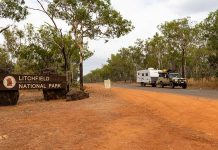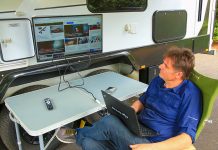The definition of a shortcut is usually ‘a shorter route than is usually taken’. And that’s what I thought when we headed offroad to another destination, but little did I know what we were going to find along the way.
The ‘original’ plan was to head across to the Flinders Ranges after recent rainfall from Broken Hill into South Australia and up to Wilpena Pound to hike and revisit the area. But with an overnight stay at Yunta, SA, we found that we could cut across the desolate plains towards the Flinders and perhaps save some time… or so we thought.
Now, Yunta, on the Barrier Highway between Broken Hill and Adelaide, has a population of just under 100 people, but it was once a bustling rail town. Today, it’s just a stop for fuel.
HARRY DING’S BASE
Established in 1887, Yunta was extremely busy. More than 5000 miners passed through on their way towards new goldfields in Teetulpa and Waukaringa to the north. It was also a busy rail town on the growing Adelaide to Broken Hill line. Around Yunta, you’ll still find a few rail relics from that bygone era.
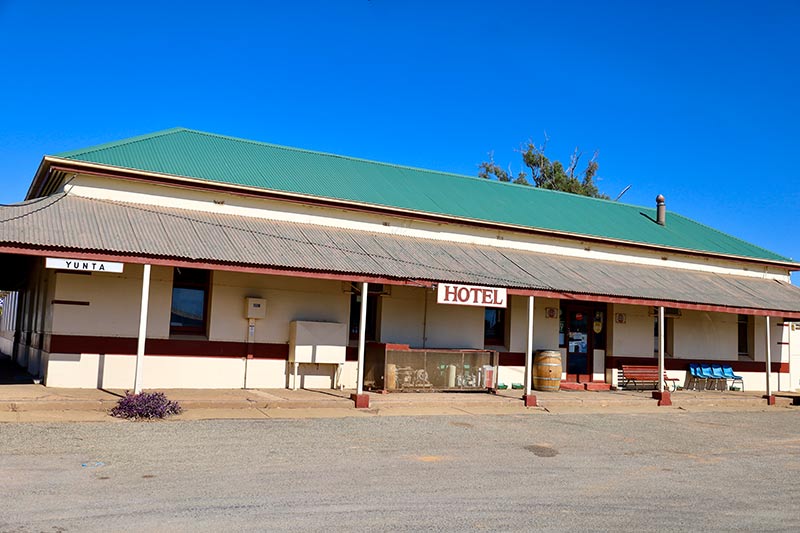
Yunta is also known for being a base for the well known Harry Ding, who took on Arthur Kruse’s business in 1934, which included a general store and a post office. It was from here that the legendary Tom Kruse, at the ripe old age of 22, started his iconic runs up to Birdsville on January 1 1936. For nearly 20 years, Tom and his Aboriginal offsider, Henry Butler, worked tirelessly to get the mail truck to Birdsville and back, enduring a range of conditions and hardships.
It wasn’t until 1957 that a road was graded for an Ampol car trail to Birdsville that made life easier for Tom and the crew.
Heading out of Yunta, I spotted an alternative route towards Arkaroola and Innaminka, and was hoping that we could track across to Wilpena.
Tea Tree Road headed north, which was at least in the right direction. Warning signs indicated that the entire road was open, becoming dirt just out of the town’s limits. The land was barren, with mountain ranges in the distance, but it was surprising to see pastoral stations.
DISCOVERING WAUKARINGA
With just 35km under our belt, we came across roadside ruins. They turned out to be more than we bargained for. Reading the roadside info signs, this was the Waukaringa goldfield area. The sandstone-blocked building beside the road was the post office that was manned from 1875 through to 1984. It also served as a general store and the local bank. It moved to the present location in 1903 after a fire burnt down the original building.
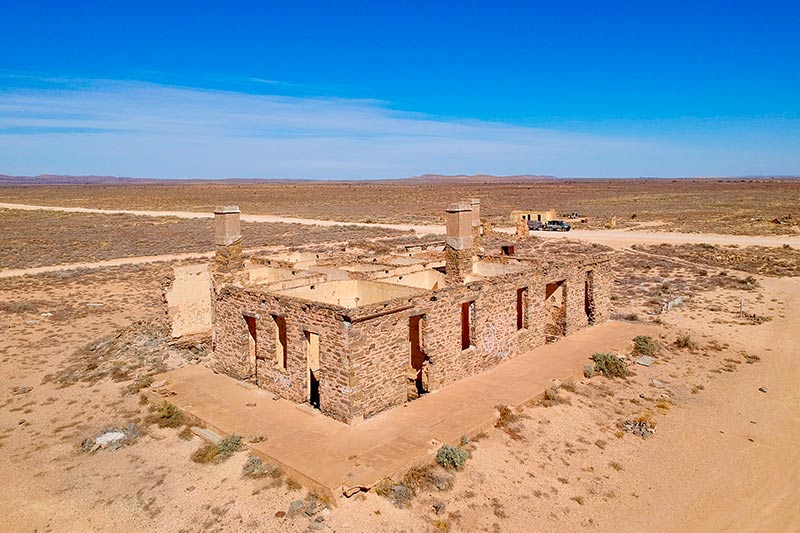
Reading the postmaster’s sign, it seemed that the job was handed down through many family members over the years.
Across the paddock, large and significant ruins still stand today: the Waukaringa Hotel, which was built in 1889 and served its last drink in 1964.
The township was proclaimed in 1888 where a population of nearly 500 was driven by the local goldfields. Today, the massive, crumbling ruins have multiple rooms on ground level. The underground cellars can be seen and the building has three huge chimneys, which would have been used during the cooler months for heating and for cooking. There are other ruins in the surrounding area, like smaller walls, huge bricked pits perhaps used for underground storage, and a large amount of metal materials, like vehicle wrecks, large square water drums, thick metal plates and so much more.
The town of Waukaringa was built following the discovery of nearby gold-bearing reefs in 1873 by James Watson, a shepherd on a local pastoral run. Originally, there was chatter that it would be perfectly useless to search for gold in that direction to the north. At the time, gold was being freely found more to the west at Kooringa, where the gold could be seen in the quartz and ironstone, so Waukaringa developed very slowly over a number of years. But it was to become one of the longest lasting goldfields in South Australia.
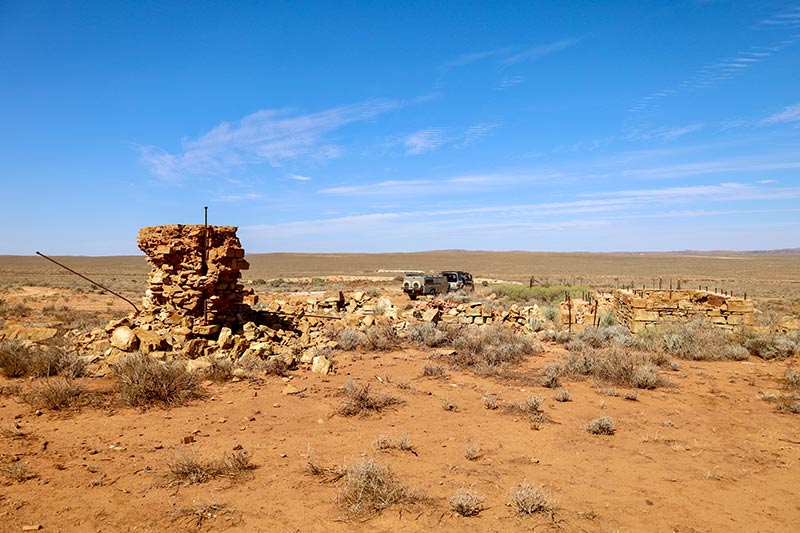
Starting as alluvial goldfields, where independent miners claimed small fortunes, larger companies soon moved in and commercial operations began. The nearby fields and ranges soon became full of deep gold mines and shafts, and lead was found in abundance.
Good gold was being found, and mining companies were intent on running two shifts a day, but in most cases when large companies come in, there was conflict – the miners refused to work after 1pm on Saturdays. Consequently, all of the miners were sacked on the spot and others were transported in from Victoria. It’s reported that just on 1427kg of gold was pulled from the ground here.
MORE RELICS
Panning around and scoping the horizon, two huge chimneys caught my eye on a nearby ridge, as did a massive sunken roof section in a gully. Exploring across the area, I discovered that the stacks (one huge stone stack and a smaller metal one) were part of the mine setup. It was easy to find where the boilers, stampers and crushers were going by the massive steel threaded bolts protruding from the ground.
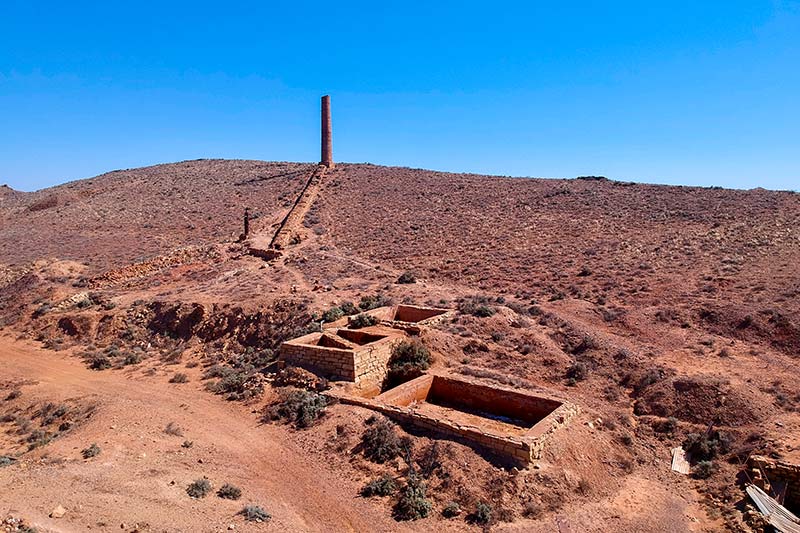
There’s plenty of stonework still scattered around the area, like basic shelters, chimney flues, walls and other relics. The main mine, the Alma, can still be found. Documents say it’s more than 500m deep, has 14 different levels and more than 1600m of tunnels – truly impressive. Other mine tunnels can be found, with warning signs declaring bad air inside. It’s not wise to go in.
Down in the gully, the massive low roof I had spotted seemed to be sitting on the ground, though it actually covered the old water supply, where water runoff was channelled to the undercover tanks from a couple of different areas. Still holding water today, it’s a haven for birds and insects.
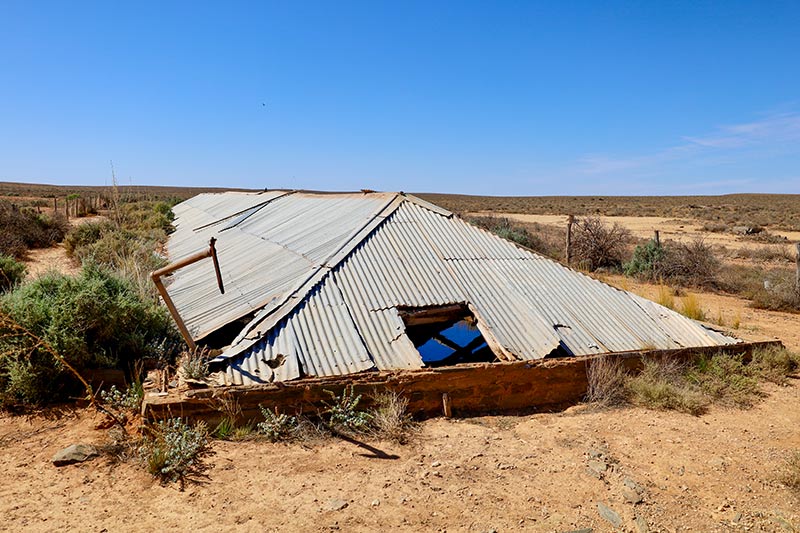
Like most towns that experience steady population growth, two cemeteries were built, with a Catholic one near town and a general cemetery in the town common. The entire area was finally abandoned in 1982.
NORTH TO THE FLINDERS
Our time was up here so we continued north on Tea Tree Road for another hour, to hopefully find a cross road towards Wilpena and the Flinders. Road conditions were pretty good, with long stretches of desert-like sections, plenty of dry creek beds (these were rough) and over small rocky ranges.
We eventually found a turn-off just past Curnamona Station and swung left onto Martins Well Road, the Flinders in the distance.
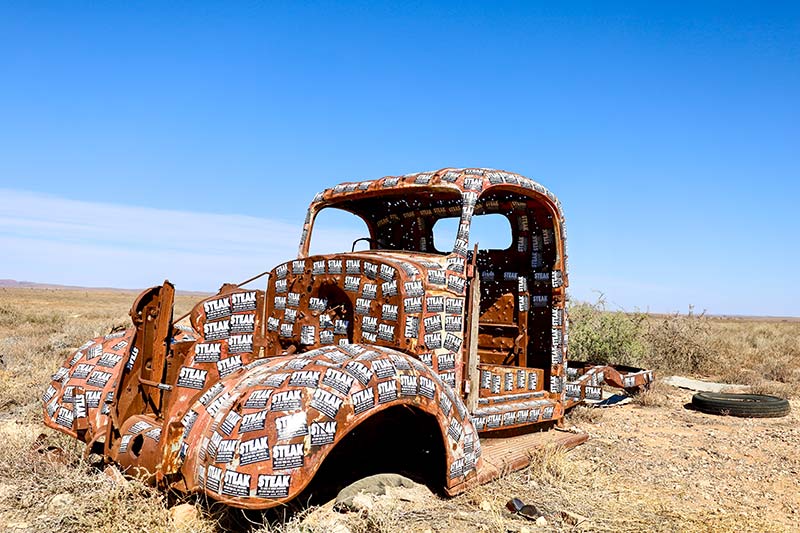
Passing the huge Martin Wells Station, we were finally on the last leg of the ‘shortcut’, now with the Chace Range towering beside us to the south, which somehow would be connected to the stunning Flinders Ranges close by.
Our last stop was at the very impressive Pugilist Hill lookout. The short, steep track to the top led us to the most amazing view of stunning prehistoric ranges claimed to be the oldest rock in the world, holding so many secrets from the past.
Down across the landscape below, it was easy to trace where old creek beds lay, with trails of green gums that had been soaking up the water for many years. It was also easy seeing other travellers pass by with their dust trails lingering without a breeze to disperse the dust.
Our journey was nearly over – it was just a few kilometres to the Flinders Ranges Road and up to camp.
Now, while the shortcut got thrown out the window because we spent a day exploring the ruins, it definitely was great exploring the goldfields and getting off the beaten track.



